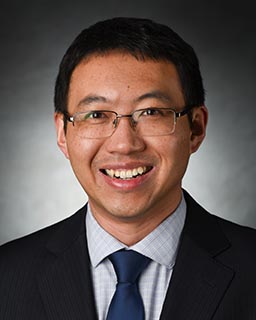New nuclear engineering faculty to focus on next-generation nuclear power plants
9/1/2020
By Tessa M. Woodring
UNIVERSITY PARK, Pa. — In January 2020, Xing Wang joined the Ken and Mary Alice Lindquist Department of Nuclear Engineering in the Penn State College of Engineering. As an assistant professor and researcher who specializes in the development of materials for next-generation nuclear power plants, Wang hopes to continue to inspire future nuclear engineers and scientists at Penn State.
“Dr. Wang is a rising star in the area of advanced in-situ nanomechanical characterization of materials under extreme conditions such as radiation damage,” said Jean Paul Allain, head of the Ken and Mary Alice Lindquist Department of Nuclear Engineering. “Dr. Wang complements the strength of our nuclear engineering department at Penn State with his extensive research in nuclear materials and nuclear fission applications, and plans to expand into nuclear fusion materials.
“His expertise will enable our nuclear engineering department to establish convergence in nanotechnology, materials science and advanced characterization,” Allain added.
Wang earned his bachelor’s degree from Tsinghua University in Beijing, China. He then went on to earn his master’s and doctoral degrees in nuclear engineering from the University of Wisconsin-Madison.
For three years, Wang continued his research at the Oak Ridge National Laboratory as a postdoctoral research associate. Wang’s research focuses on understanding nuclear reactor materials and their behavior when exposed to extreme environments — such as radiation, corrosion and high temperature.
Wang specifically studies radiation damage, and he investigates the materials’ microstructure evolutions using both microscopy analysis and material simulations. For the microscopy analysis, he uses transmission electron microscopy (TEM) and atom probe tomography (APT) — a technique that determines the chemical information of a material, atom by atom.
“At Penn State, I hope to develop a research program that combines microscopy analysis and multiscale simulations to design materials with superior radiation tolerance and mechanical properties,” Wang said. “I want to introduce this state-of-the-art research into my classroom and ignite the passion for nuclear engineering for my students.”
Wang’s work with his University of Wisconsin-Madison colleagues was recently published in Nature Materials, a high-impact research journal on materials science and engineering. Wang said he is excited to continuing building upon his research with collaborators at Penn State.
“The Penn State College of Engineering and the Department of Nuclear Engineering have an excellent reputation,” Wang said. “The world-renowned scientists and engineers in both the college and University are highly respected by the research community.”
Wang also noted one factor that attracted him to Penn State was something on a more personal level.
“In my research, I use a technique called atom probe tomography,” Wang said, a technique that offers a unique capability for simultaneous 3D imaging and composition measurement at the atomic scale. “This technology was invented by Professor Erwin Muller in 1967 at Penn State. I am very excited to be in the birthplace of the technology I am using every day.”




